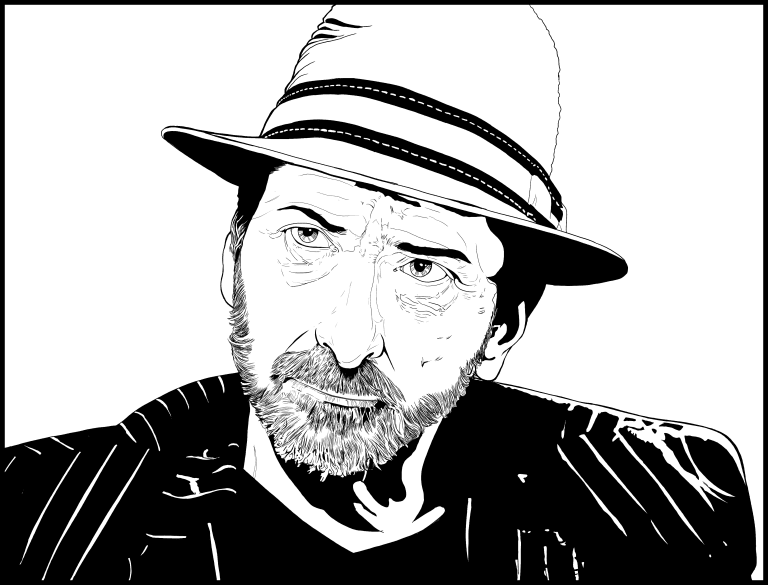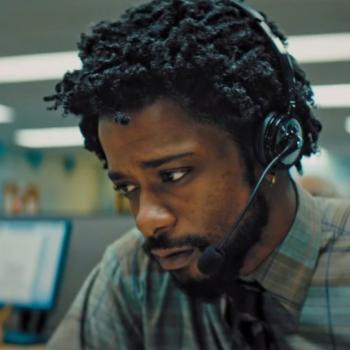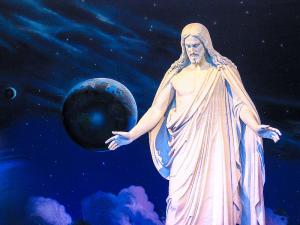
Frank Miller is more powerful than he’s ever been.
His political rants have left his longtime fans embarrassed. His lackluster work of recent years has left younger generations of comic book fans uninterested. But there is no denying that in 2016, we are on the verge of peak Miller.
The most obvious reason would, of course, be because Zack Snyder’s upcoming superhero epic Batman vs Superman has taken its cues from Miller’s The Dark Knight Returns. Despite the fact that his name tends to come up in relation to pretty much every Batman movie made since 1966, Frank Miller’s vision of the Caped Crusader has never been so transparently referenced. Yes, Christopher Nolan made multiple nods to both Miller’s Year One and TDKR, but his vision of Batman owes a lot more to depictions by Jeph Loeb and Denny O’Niell. Snyder’s Batman vs Superman is the first time that we’re really getting vintage Miller on screen.
But even more so than Batman vs Superman, Drew Goddard’s Daredevil series for Netflix — simply called Daredevil — signals the full embrace of Miller’s vision for people who dress in tights and fight crime. Not only does the series borrow multiple visual cues from Miller’s long and influential time with the character, but its mood and ethos drip with reverence for 1980s Miller. The hero is solemn, contemplative, and speaks as though his only language is brutal justice. Though it theoretically takes place within the same universe as The Avengers, this New York reflects Miller’s obsession with crime ridden alley’s and corrupt public officials. As Alex Pappademas wrote in his examination of Miller’s career in the now defunct Grantland, his New York “looks more like Travis Bickle’s,” than any thing Stan Lee or Joss Whedon ever dared to dream up. When I watched season 1, I was simply awe struck by how far the show runners were willing to go to recapture some of that 80s grit and grime and place it in the post-Giuliani/Bloomberg present. All of this is on full display for the new trailer for the second season of Goddard’s show (which, as it just so happens, will air the same day as Batman vs Superman).
What’s so truly impressive about Goddard’s series, though, is how successfully it’s tricked people into thinking it’s not influenced by the now notorious Miller. In a review of the series for Slate, Jack Hamilton explained that what makes the show so successful is its ability to “take itself and its audience seriously while avoiding either pretentious brooding or fanboy pandering.” Not only is that funny to read because familiarity with Miller’s work makes it hard not to see the show as one giant pander, but because that’s also what many critics were saying about Miller’s work in the 80s. In that regard, Goddard’s Daredevil is probably the best tribute to Miller’s contributions to comic books.
I for one am not particularly fond of the show, principally because I think the dialogue, pacing, and dim lighting make for a viscous combination that’s hard for me to invest in. Still, in an era when people are complaining at a constant rate that super heroes aren’t for grown ups and that Frank Miller single handedly ruined comics, it’s nice to see that someone has figured out how to prove them all wrong.
Try as we might, we just can’t ignore Frank Miller. He’s in Ben Affleck. He’s in Charlie Cox. He’s in Rob Liefeld’s Deadpool. He’s most surely in Todd McFarlane’s newly completed Spawn screenplay. And last but not least, he’s once again making waves at your local comic book store. At a time when he’s more reviled than ever before, the ghost of Frank Miller is everywhere.
Like Peculiar People on Facebook:











